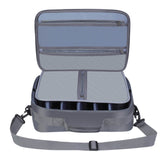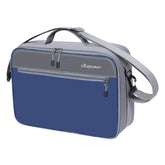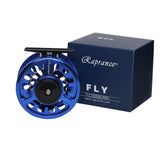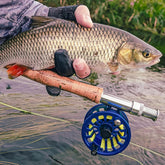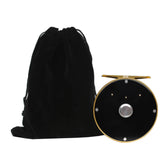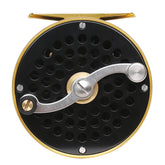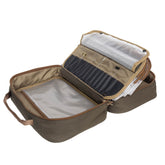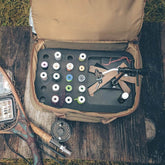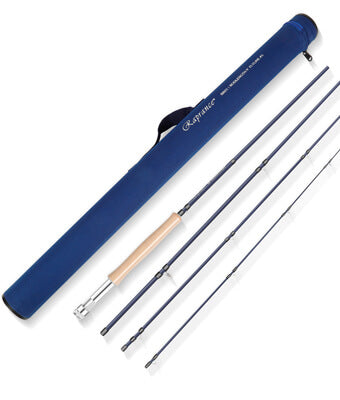Fly Fishing Line: A Comprehensive Guide to Leader Material Comparison and Connections
Selecting the right fly line and leader material is crucial for effective fly fishing. The choice of fly line can significantly impact your presentation and the overall success of your fishing trip. Understanding the differences in leader materials and how they affect your lure's behavior can help you make informed decisions.

In my experience, each type of fly fishing line serves a specific purpose, whether it's for delicate presentations on calm waters or for heavier setups in fast currents. Knowing how to attach a leader to your fly line efficiently also plays a vital role in ensuring that your fly behaves naturally in the water, maximizing your chances of attracting fish.
Additionally, I will explore some top-rated fly fishing leaders that stand out for their performance and durability. By the end of this article, you'll be equipped with knowledge about the best combinations of fly line and leader material to elevate your fly fishing experience.
Understanding Fly Lines and Leaders
When discussing fly lines and leaders, I focus on their materials and how they contribute to fly fishing success. The right combination can enhance casting efficiency and improve the overall fishing experience.
Composition of Fly Lines
Fly lines are typically made from various materials, including PVC, polyurethane, and other polyolefins. The choice of material affects the line's buoyancy, weight, and durability.
Key components of fly lines include:
- Core: Usually made from braided monofilament or other materials which determine the line’s strength and flexibility.
- Coating: A smooth outer layer that improves casting distance and accuracy.
Different lines provide specific advantages. For instance, weight-forward lines help with turnover for easier distance casting, while floating lines float on the surface, making them ideal for dry flies.
Fly Fishing Leader Materials
Leaders are essential for effective fly fishing, providing a transition from the thicker fly line to the delicate tippet. They are commonly made from three types of materials: monofilament, fluorocarbon, and nylon.
Material comparison:
-
Monofilament: Generally less expensive and offers good strength and flexibility. It is visible in water, which can deter fish.
-
Fluorocarbon: Submerges well and is nearly invisible underwater. This material excels in abrasion resistance, making it suitable for tougher conditions.
-
Tippet: A finer version of leader material, allowing for better presentation of flies. I choose tippet based on the size of the fly and species targeted.
By understanding these materials, I can select the appropriate leaders for various fishing scenarios, enhancing my effectiveness on the water.
Connecting Leaders to Fly Lines

Connecting a leader to a fly line is crucial for a successful fly fishing experience. The right knots and attachment methods can enhance your setup's strength and reliability, ensuring better performance on the water.
Knots and Connections
When connecting a leader to fly line, I prefer using a few specific knots that offer durability and ease of use. The clinching knot is one of the simplest options, effective for securing the leader to the line.
Another reliable knot is the blood knot, suitable for joining two lines of similar diameter. If I need to connect a heavier leader to a fly line, the nail knot is my go-to choice due to its strength and compact nature. For those who prefer quick connections, a tippet ring allows me to easily swap out leaders without re-knotting. Each knot type has its own advantages, depending on the fishing scenario.
Attachment Methods
In addition to knots, various attachment methods can streamline the connection of leaders to fly lines. Loop-to-loop connections provide a fast and secure way to connect the two. Using a braided loop on the fly line allows for easy attachment and detachment of the leader.
I often utilize a welded loop for a clean connection point, ensuring minimal tangles. When using a needle knot, I can create a smooth transition from my line to leader, which is beneficial in preventing snags. These methods enhance my fishing efficiency while ensuring a robust setup.
Selecting and Using Fly Fishing Leaders

Selecting the appropriate fly fishing leader is crucial for successful casting and catching. Understanding leader types and their maintenance ensures optimal performance on the water.
Choosing the Right Leader
When I select a fly fishing leader, I consider the material, which generally falls into two categories: monofilament and fluorocarbon. Monofilament leaders are versatile and easily visible, making them ideal for dry fly fishing. Fluorocarbon leaders, on the other hand, are less visible underwater and have a higher abrasion resistance, making them great for challenging conditions.
The length of the leader also plays a significant role. A longer leader is ideal for spookier fish or when using smaller flies. For example, a 9 to 12-foot leader works well for delicate presentations. I also match the leader's breaking strength to the fly size, ensuring that it can handle the weight without visibility issues.
Maintenance and Leader Changes
I find that proper maintenance of the fishing leader can significantly extend its life. Inspecting the leader for nicks or abrasions after each fishing session is essential. If any damage is visible, I promptly replace the leader to avoid losing fish.
Changes to leaders should be made according to specific rig setups. For instance, when using heavier flies or in fast currents, I opt for thicker leaders. Keeping several types of leaders on hand allows for quick adjustments during fishing. Prioritizing these maintenance tasks ensures I'm always ready for success on the water.

